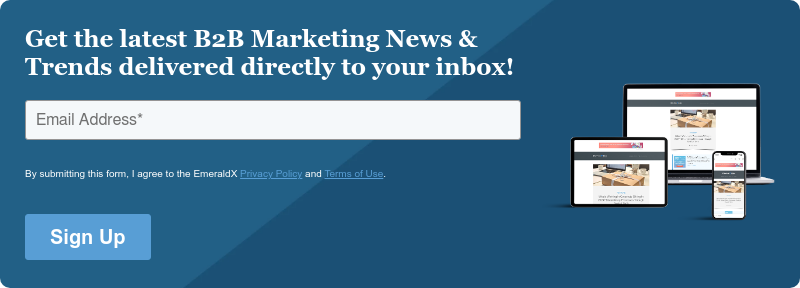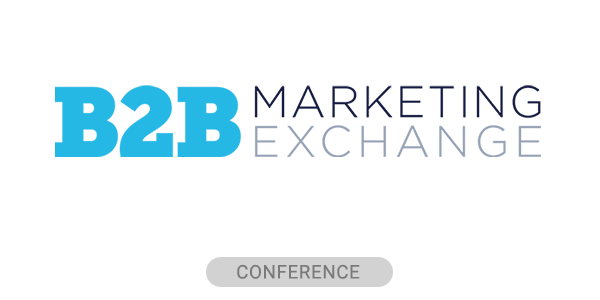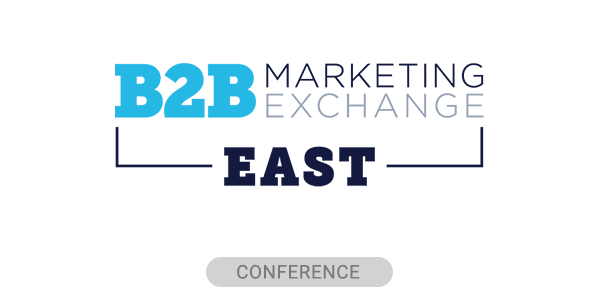Webinars have long been a staple in the B2B marketer’s toolkit, but the landscape is changing faster than ever. Today’s audiences demand flexibility, personalization, and on-demand access, driving businesses to rethink how they host and leverage webinars.
If you’ve been wondering how enterprises are adapting to these shifts while redefining customer engagement strategies, Goldcast just released their 2025 B2B Webinar Benchmark Report that sheds light on how leading enterprises are harnessing artificial intelligence (AI), adapting webinar formats, and layering content strategically across the buyer’s journey to meet evolving demands. It’s an insightful guide for businesses striving to stay ahead in an increasingly competitive digital landscape.
Palash Soni, CEO and Co-Founder of Goldcast, shared key takeaways from the report, unveils trends redefining webinar strategies, and offers actionable advice for marketers looking to maximize their impact in our interview.
Demand Gen Report (DGR): Palash, thanks for taking time to talk to us. How have audience preferences shifted for webinar experiences, and what trends should companies adopt to meet changing demands?
Palash Soni: Glad to. Audience preferences haven’t just evolved, they’ve fundamentally changed. Today’s B2B buyers don’t always want to sit through a 45-minute session—they want the gist, faster. They’re looking for on-demand access, short-form clips, highlight reels, and key takeaways they can quickly scan or share. That’s why 80% of webinars on our platform are now offered on-demand: it’s a clear sign that high-performing teams are recognizing the shift and adapting. Live events still have a role, but they’re no longer the main attraction. To meet these new expectations, top teams are treating webinars less like one-time events and more like modular, on-demand media assets that are built for discovery, designed for rewatchability, and structured for repurposing across channels.
DGR: What are the advantages of pre-recorded webinars compared to live webinars for B2B enterprises? How does offering on-demand webinars impact the attendance rates of live sessions?
Soni: The advantage of pre-recorded or simulive webinars is control. Teams have more flexibility over the narrative, pacing, and production quality, which leads to a smoother, more polished experience for viewers. But just as importantly, it takes pressure off the live team. Without the stress of managing tech logistics in real time, marketers can focus on what really drives engagement: responding in chat, answering questions, and creating a dynamic environment for attendees. Many companies are now adopting a hybrid model—pre-recording the presentation, then going live for Q&A. It’s a smart move that offers the best of both worlds: high-quality content and real-time interaction. And while there’s a lingering myth that on-demand availability cannibalizes live attendance, the data tells a different story. It actually expands reach and deepens engagement. Our report shows a 225% year-over-year increase in webinar production, driven by companies leaning into always-on, cross-functional use cases—from marketing and product to sales enablement and customer success. Teams that offer both live and on-demand formats are seeing higher total consumption and stronger long-tail ROI. The future isn’t either/or—it’s about layering formats intentionally across the buyer journey to meet people where they are.
DGR: How can organizations successfully transition a live webinar into valuable on-demand content?
Soni: The best teams build every webinar with reuse in mind. What used to be a one-time event is now a content multiplier. Across our platform, we’ve seen a 2,903% increase in AI-generated video clips and an 11,464% jump in text-based assets pulled from webinars. Where that content goes next is just as important. The most effective teams are using webinar assets to create short-form video for LinkedIn, building thought leadership and mindshare directly from both their personal and company channels. They’re also equipping speakers with polished, ready-to-share clips, helping them extend reach within their own networks and drive additional lead flow. And they’re organizing video content into thematic YouTube playlists, capturing engagement and subscribers on the second-largest search engine in the world.
DGR: How can webinars be integrated into broader B2B content strategies for sustained value and extended reach?
Soni: Webinars, when approached strategically, can anchor an entire B2B content strategy. Leading teams are turning each webinar into a multi-format content engine: extracting quotes for social, summarizing insights into blog posts, embedding clips into nurture sequences, and enabling sales to use chaptered video snippets across the funnel. One of the most impactful ways we’re seeing webinars repurposed is through multi-modal blog content. By combining video highlights, transcripts, and takeaways into a single asset, teams create SEO- and GEO-optimized pages that continue to drive inbound traffic long after the event. This format performs especially well in both organic search and AI-powered discovery tools. Webinars are also being integrated directly into platform-specific content strategies. On LinkedIn, short-form clips pulled from webinars help build thought leadership and brand mindshare. On YouTube, webinars are curated into thematic playlists that boost engagement and visibility on one of the most powerful search engines available.
DGR: How can organizations strategically choose webinar topics to align with their business goals and audience interests?
Soni: The best webinar topics sit at the intersection of audience intelligence and business strategy. That might come from sales conversations, product usage data, or even support tickets, but it’s always grounded in reality. At the same time, top teams are using webinars to drive toward specific goals: launching a product, breaking into a new vertical, or accelerating late-stage deals. Webinars are flexible by design, and their low lift makes them ideal for testing and iterating until the formula clicks.
DGR: What specific metrics should businesses track to measure webinar engagement effectively? What key factors should businesses consider when deciding the optimal frequency for hosting webinars in a year?
Soni: Webinar performance can’t be measured by registrations alone. A more strategic approach starts with understanding who showed up, specifically, how much overlap there is between your ICP or target account list and your registrant pool. Another key metric is what we think of as “money in the room”: a weighted estimate of potential pipeline tied to attendees, with more weight given to new prospects and less to existing pipeline. It’s also worth tracking cumulative social impressions from repurposed content, and engagement during the event itself – like chat volume, Q&A participation, and poll responses—to get a clearer picture of real-time interest and involvement. On cadence, we’re seeing many teams move from quarterly to monthly, even biweekly webinars. When content is repurposed across channels, increasing frequency becomes a growth lever, not a resource drain.
DGR: What strategies help align webinars with sales goals to ensure pipeline growth and deal acceleration?
Soni: This is where the smartest marketers are breaking down silos. When sales and marketing co-own the content agenda, webinars become a powerful pipeline accelerator, not just a brand play.
Before the event, aligning on topic and speaker selection is critical. The most effective teams loop in sales early to shape webinar themes around pain points that resonate with the ICP, and feature speakers that reflect the audience they’re trying to reach.
During the event, real-time sales engagement makes a measurable difference. At Goldcast Summer Camp, for example, we had BDRs actively messaging target accounts as they joined, chatting with prospects in-platform, and surfacing follow-up offers in real time. This kind of in-event engagement increases the chance of conversion and gives sales teams context-rich touchpoints immediately.
After the event, the focus shifts to smart content repurposing. Sales teams are using AI-clipped highlights as follow-up assets, objection handlers, and personalized outreach tools. A single session can yield weeks of highly targeted, high-leverage content that moves deals forward.
That’s the next frontier: webinars not just as a top-of-funnel driver, but as full-funnel sales tools—designed for conversion, not just awareness.
DGR: How can B2B companies future-proof their webinar strategies to adapt to upcoming industry disruptions?
Soni: The companies best positioned for the future are treating webinars as modular, scalable, and AI-powered content assets. They’re moving beyond one-off campaigns toward systems that let them create once and distribute everywhere—across formats, channels, and stages of the funnel. Sessions are designed for flexibility: chaptered, segmented, and dynamically surfaced based on the viewer. At the same time, as AI-generated content saturates every channel, live interactions with real experts and industry leaders will only become more valuable. Audiences will tune out generic content and gravitate toward formats that offer authenticity, credibility, and direct access to trusted voices. Live presence will become a premium experience—and a competitive edge. As content distribution evolves with AI search and dynamic recommendation engines, the question will no longer be, “Did they attend our webinar?” but rather, “Did they consume the right part of it, at the right time, in the right format?” Webinars that are flexible, repurposable, and discoverable will always outperform.
DGR: How can businesses effectively calculate the ROI of their webinar efforts?
Soni: Calculating ROI today means going beyond MQLs. You have to look at how a webinar contributes to sourced and influenced revenue, how many usable content assets you extracted, and how those assets performed across channels. A webinar might directly influence pipeline, or it might fuel five social clips that drive demo traffic over time. Here, too, the “money in the room” metric plays a key role, giving teams a tangible way to assess the pipeline potential tied to actual attendees, especially when weighted for net-new prospects. It helps connect engagement to revenue in a more meaningful, forward-looking way. With Goldcast, customers can now directly attribute content engagement—both live and on-demand—to downstream business outcomes. That’s a seismic shift. You’re no longer guessing. You can see the actual business value of a webinar in your CRM and your content analytics. And when you account for the repurposing gains and AI-powered content lift, the return often far exceeds the original investment.







